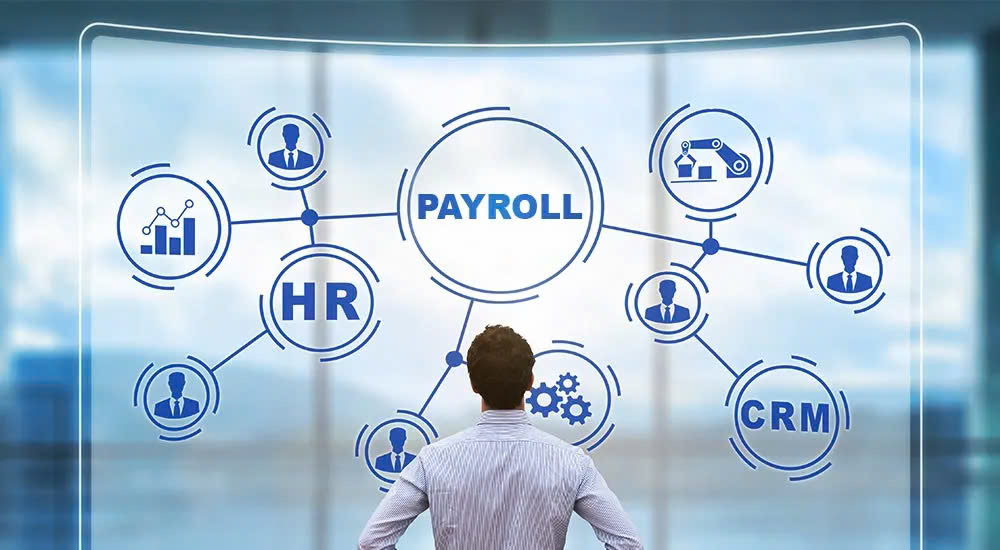The article below takes a closer look at their coordination mechanisms, individual roles, common bottlenecks, and proposes an optimized process to help businesses operate more smoothly.
1/ Why Is Coordination Between HR – Payroll – Direct Managers Essential?
In many organizations, each department handles specific responsibilities:
- HR: Recruitment, training, attendance tracking, disciplinary actions, leave management...
- Payroll: Salary calculation, bonuses, insurance, personal income tax settlement...
- Direct Managers: Monitor performance, approve leave, propose salary increases or bonuses…

HR manages employee data, payroll handles compensation, direct managers oversee performance and suggest rewards.
However, without clear communication and collaboration channels, information is prone to delays or discrepancies. For example:
- HR logs incorrect leave data due to pending manager approval.
- Payroll miscalculates salary due to missing overtime data from managers.
- Managers complain that the payroll does not reflect actual employee performance.
Coordination among the three departments not only reduces errors but also enhances employee experience, optimizes efficiency, and lowers operational costs.
2/ Disconnected Workflows and Common Consequences
If you’ve worked in an environment where each department "fights their own battle,” you’re likely familiar with problems like:
- Delayed information: For instance, HR issues a transfer decision, but payroll isn't informed, resulting in incorrect salary processing.
- Lack of transparency: Employees are unclear about the reasons for deductions or bonus rejections.
- Slow decision-making: Managers want to reward high-performing staff, but HR lacks up-to-date performance data.
- Internal distrust: Even small payroll mistakes can create misunderstandings and affect employee engagement.

Disconnected workflows between departments often lead to payroll errors and erode employee trust.
3/ The Ideal Coordination Process Between the Three Departments
Companies need to build a clear, transparent coordination process between HR – Payroll – and Direct Managers to ensure smooth data flow and timely, accurate decisions.
Below is a suggested 3-phase workflow aligned with the employee lifecycle—from onboarding to resignation—highlighting each party’s role and supporting tools:
3.1. Recruitment & Onboarding Phase
- HR collects employee data, labor contracts, salaries, allowances, and start dates.
- Payroll is provided with this data to configure salary setup.
- Direct Managers plan probation, assign tasks, and monitor early performance.
Supporting tools: Standardized onboarding templates, HRM systems integrated with payroll software.
3.2. Working Phase
- Direct Managers monitor working hours, approve leave, and record overtime via software.
- HR consolidates and reconciles data with managers if inconsistencies occur.
- Payroll uses approved data to calculate salaries, bonuses, and allowances accurately.
Supporting tools: Digital timekeeping systems, mobile leave approval apps, HR chatbots.
3.3. Resignation Phase
- Direct Managers conduct final evaluations and confirm resignation dates.
- HR handles contract termination and insurance settlements.
- Payroll processes final pay, unused leave compensation, and KPI-based bonuses if applicable.
Supporting tools: Offboarding templates, cross-department checklists, automated settlement systems.
4/ Tools and Technology for Effective Coordination
| Tool | Function | Benefits |
|---|---|---|
| Integrated HRM System | Manage HR, payroll, timekeeping, and performance evaluations | Automates processes, synchronizes data |
| Specialized Payroll Software | Calculate salaries, insurance, personal income tax | Reduces manual errors, increases accuracy |
| Employee Self-Service Portal | View payslips, apply for leave, update personal info | Reduces workload for HR and managers |
| KPI Evaluation System | Quantify and track performance | Supports payroll in determining accurate bonus amounts |

Technology is a crucial enabler in linking information across HR, Payroll, and Direct Managers.
5/ Practical Benefits of Effective Coordination
- Fewer payroll errors, fewer complaints
- Improved employee experience and trust
- Faster internal processing times
- Enhanced management decision-making
- Cost savings through reduced manual workload
6/ Key Considerations When Implementing the Coordination Process
- Define clear workflows: Who does what, when, and with what tools?
- Standardize data formats: Avoid separate Excel sheets per department
- Cross-department training: HR should understand payroll; managers should grasp HR functions
- Regular reviews and updates: At least quarterly
- Ensure data security: Especially for payroll and performance information
A well-functioning company is not built on individual brilliance alone, but on systematic collaboration across departments. The synergy among HR – Payroll – and Direct Managers forms the backbone of a transparent, efficient, and sustainable organizational culture.
If you're facing issues like payroll discrepancies, data mismatches, or delayed approvals, it might be time to reassess how your departments are collaborating.
HR2B – With over 20 years of experience in HR and payroll services in Vietnam
- Automate HR and payroll processes
- Ensure legal compliance and high data security
- Minimize risks, enhance management performance
Contact HR2B today for a free consultation and a tailor-made solution for your business.
 Uniting Talent
with
Opportunity
Uniting Talent
with
Opportunity




Top page